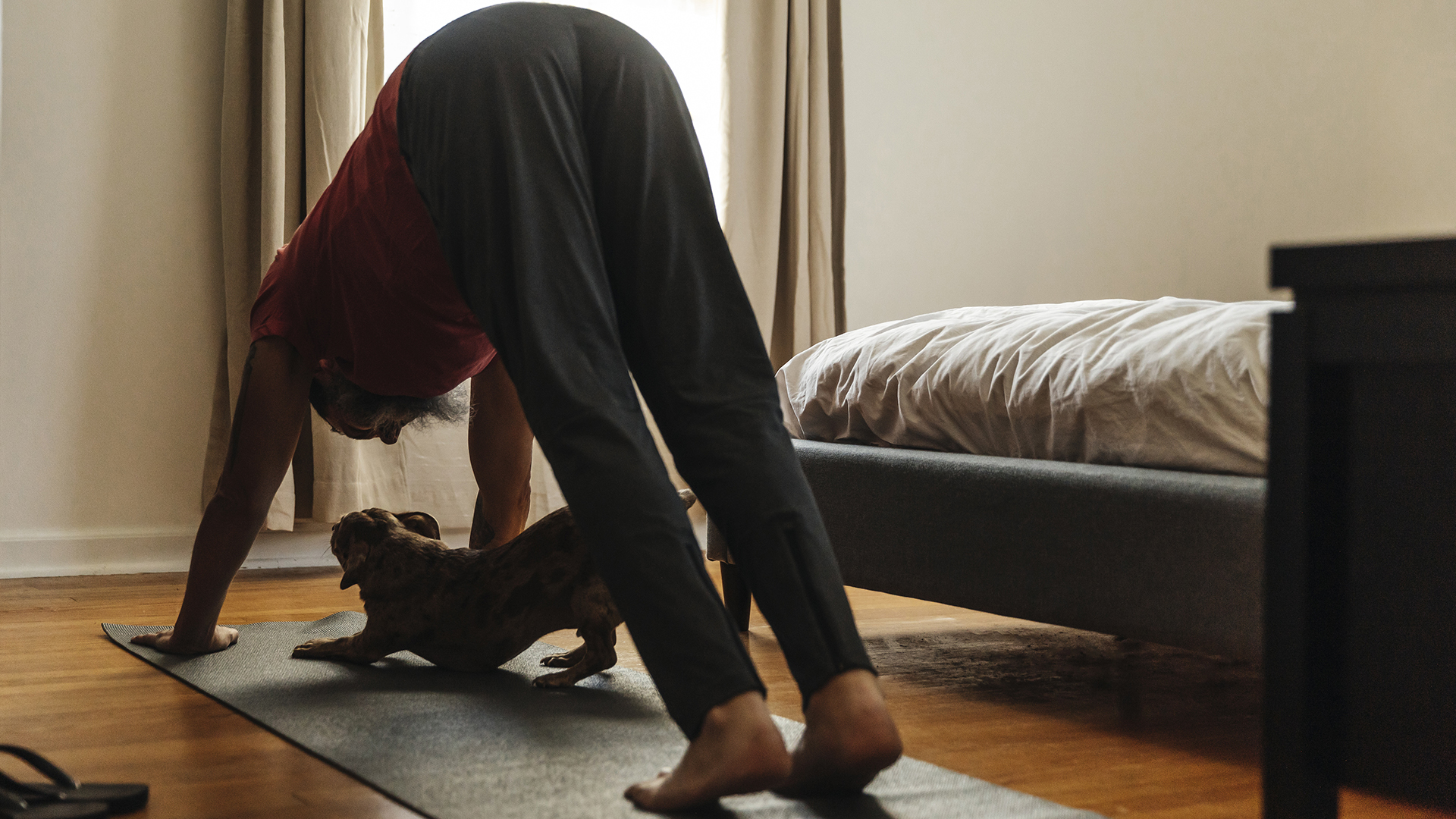Using a white noise machine has improved my sleep – but not in the way I expected
Why listening to white noise before bed helped me sleep

As a sleep writer, I hear a lot about the benefits of using white noise for sleep. So when I was preparing to write my Groov-e Serenity sound machine review, I was excited to see what the white noise could do for my slumber. I struggle with tossing and turning at the start of the night, so I was hoping that listening to white noise during this initial period of restlessness would help me get snoozing faster.
However, it very quickly became obvious that white noise was not the answer to my sleep problems. At best, I saw no improvement in how long it took me to fall asleep and at worst, I was waiting for the timer to run out so the noise would stop. The strange thing was, I found most of the noises calming. Just not when I was in bed and wanted silence.
During my testing, I discovered that white noise actually had the most positive effect on my sleep when I used it around my bedtime, rather than when I was already tucked up on my best mattress. Here's what I've learned about the surprising ways white noise can benefit my sleep.
White noise before bed
Busy thoughts are often one of the biggest challenges to my bedtime routine, keeping me awake when I'm trying to drift off. But I discovered that listening to the relaxing and repetitive sounds of ocean waves during my wind-down helped ease a wandering mind, putting me in the calm headspace I needed before sleep.
It focused my thoughts before bed
Studies indicate that listening to white noise can improve concentration, and I felt something similar occur when I used it during my bedtime routine. White noise kept me focused on the task at hand – getting ready for bed – rather than allowing my thoughts to drift to anything that might cause stress or anxiety.

In bed, white noise was distracting because it kept drawing my attention. But this wasn't a problem during the wind-down routine, because there were other things to focus on, such as brushing my teeth or journaling. White noise simply filled up the empty spaces that might otherwise have been occupied by worries.
I could keep track of my evening routine
One of the functions I found frustrating when trying to sleep, was actually useful in the wind-down: the timer. When in bed, I found the timer function added unnecessary pressure to my sleep. If I hadn’t drifted off before the timer cut out, I knew I was taking too long to fall asleep, which made me worry.
Sign up for breaking news, reviews, opinion, top tech deals, and more.
But before going to bed, the timer helped me keep track of my pre-sleep routine (it's a version of this sleep hack). When the white noise stopped, I knew it was 15 or 30 minutes closer to my bedtime, without having to watch the clock.
White noise in the morning
I also, surprisingly, found white noise useful in the morning. While I knew ASMR soundscapes could help people wake up, I'd never considered how repetitive nature sounds might benefit my own mornings. Then I came across the 'forest' function on my white noise machine.
It made me want to get outside
The 'forest' soundscape mimics a natural woodland, with repetitive bird calls a key feature. I immediately knew it wouldn't help me sleep, because I associate birds too strongly with mornings. But it could work in the opposite direction – helping me feel alert.

With bird noises twittering me awake, I was more inclined to get up and out of bed, (especially when the real birds were quiet because it was too early). It sounded like a sunny day, making me want to get outside and start enjoying the morning.
It made dark mornings feel brighter
'Forest' was particularly useful when I was the first person up, especially when I was waking in the dark. Normally on these mornings it's hard to shake the feeling that I should be in bed. But with the lights on and the forest sounds going, waking up on a winter morning felt less like I was dragging myself out of bed in the middle of the night.
How to use white noise for sleep
It took a fair amount of trial and error for me to discover how I could make white noise work for me. Here are the steps I took to find a more effective way to incorporate white noise into my sleep schedule.
1. Experiment with sounds
Everything from the sound of bacon to ambient battlefield can work as white noise, so get experimenting to see what works for you. If you've only every tried one type of white noise before, it's worth playing around with a few others – especially as there are so many places to find free white noise online.
2. Think about how you react to the sounds
The gentle swooshing of white noise made me feel calm, but not sleepy. Chirping bird calls made me want to get outside and immerse myself in nature. The pitter-patter of raindrops made me want to hide my head under the pillow. Playing these sounds and thinking carefully about how I reacted helped me better understand how I could incorporate white noise into my routine.
3. Try mindfulness
White noise can be effective at blocking out background noise and stopping thoughts from wandering– two useful features if you're trying to add some mindfulness to your routine. Pick a sound that matches the feeling you're trying to achieve (sleepy or awake), and see if it can help you achieve a deeper focus.

Ruth is TechRadar’s Sleep Writer. She’s here to help you find the perfect sleep setup for your budget and personal preferences. As well as keeping a keen eye on everything that’s going on in the world of mattresses, she regularly speaks to experts to help you learn how to improve your sleep habits, whether that’s by debunking sleep myths or explaining the science behind it all. Prior to joining the TechRadar team, she wrote features and product guides for new parents hoping to get a decent night's sleep, as well as writing for a variety of online spaces.